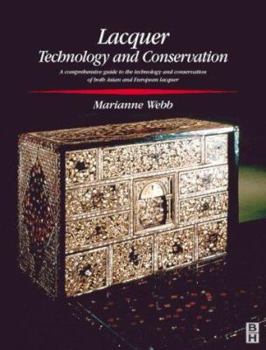Lacquer: Technology and Conservation (Conservation and Museology Series)
For the conservator this book is an invaluable tool when examining the options available for treatment of lacquer. Not only does it cover the technology and methods of treatment for both types of lacquer, but it assesses current practices enabling the conservator to make more informed decisions. Controversial issues are also debated, such as whether Asian lacquer should be restored in the Asian manner, using non-reversible materials, or using western methods that are theoretically reversible. As the book describes production technology and decorative techniques it will also be a useful aid for both art historians and collectors alike in identifying and dating lacquerware.For the conservator this book is an invaluable tool when examining the options available for treatment. Not only does it cover the technology and methods of treatment for both types of lacquer, but it assesses current practices enabling the conservator to make more informed decisions. Controversial issues are discussed such as whether Asian lacquer should be restored in the Asian manner, using non-reversible materials, or using western methods that are theoretically reversible. As the book describes production technology and decorative techniques it will also prove to be a useful aid for both art historians and collectors alike in identifying and dating lacquerware.Lacquer has long been misunderstood, particularly because the word itself has been used to characterize many different materials. For centuries the term has been used to refer to the Asian and the European materials. At present it is used to describe any glossy coating, from cellulose nitrate to modern plastic finishes.
Format:Hardcover
Language:English
ISBN:0750644125
ISBN13:9780750644129
Release Date:April 2000
Publisher:Butterworth-Heinemann
Length:200 Pages
Weight:1.60 lbs.
Dimensions:10.0" x 0.5" x 7.8"
Customer Reviews
0 rating





